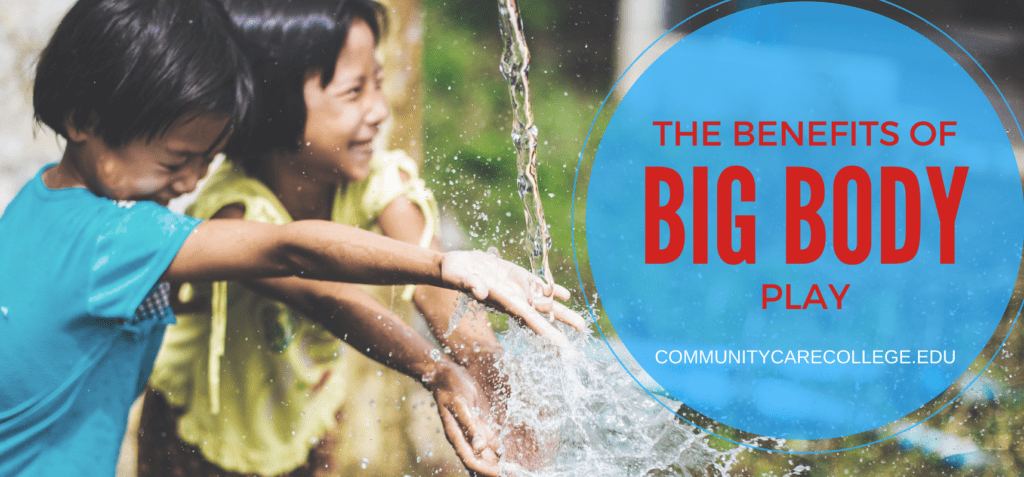Big Body Play Exercise
From the desk of Shani Snell, Early Childhood Education Department Head:
Think back to your early childhood years and how you used to play. Chances are that some of your favorite times were when you were engaged in Big Body Play. Big Body Play involves using many muscles to run, hop, wrestle and chase. It can also involve screaming, shouting, and lots of laughter. Some examples of Big Body Play are:
- Climbing a tree
- Jumping off play equipment or furniture
- Playing tag
- Wrestling with friends
- Play fighting
Children need this type of play in their lives. Big Body Play comes naturally to children but is often discouraged by adults due to its risk of injury. Supervision is still essential and ground rules will need to be set such as no neck grabs while wrestling or no jumping off objects that are taller than you.
However, there are so many benefits! Big Body Play helps children develop physically, socially, and emotionally.
- Physically they learn how to use their growing muscles and limbs while developing an understanding of their physical limits.
- Socially they gain how to communicate with other children, the importance of being gentle, and how to take turns or share.
- Emotionally they gain empathy for other people’s feelings and learn to interpret verbal and nonverbal cues.
Children who regularly engage in supervised Big Body Play exercise, release energy and are then able to calm down and focus on learning. The benefits far outweigh the risks of allowing your children to be loud and rowdy at least once a day.









